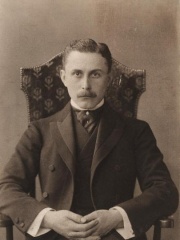
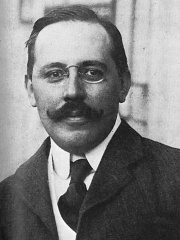
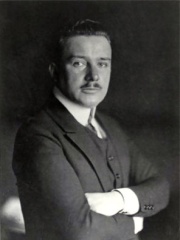
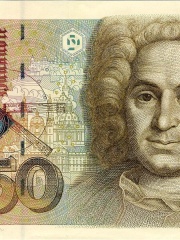
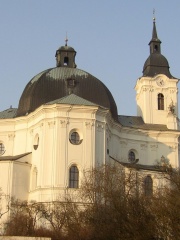
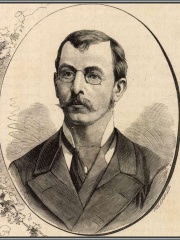

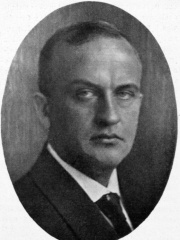
The Most Famous
ARCHITECTS from Czechia
This page contains a list of the greatest Czech Architects. The pantheon dataset contains 518 Architects, 10 of which were born in Czechia. This makes Czechia the birth place of the 14th most number of Architects behind Finland, and Denmark.
Top 10
The following people are considered by Pantheon to be the top 10 most legendary Czech Architects of all time. This list of famous Czech Architects is sorted by HPI (Historical Popularity Index), a metric that aggregates information on a biography's online popularity. Visit the rankings page to view the entire list of Czech Architects.

1. Adolf Loos (1870 - 1933)
With an HPI of 74.17, Adolf Loos is the most famous Czech Architect. His biography has been translated into 48 different languages on wikipedia.
Adolf Franz Karl Viktor Maria Loos (German: [ˈaːdɔlf ˈloːs]; 10 December 1870 – 23 August 1933) was an Austrian and Czechoslovak architect, influential European theorist, polemicist of modern architecture. He was inspired by modernism and a widely-known critic of the Art Nouveau movement. His controversial views and literary contributions sparked the establishment of the Vienna Secession movement and postmodernism. Loos was born in Brno to a family of sculptors and stonemasons. His father, a stonemason who was almost deaf, died when he was 9 and played a role in Loos' interest in arts and crafts. Loos later inherited his father's hearing impairment and other health-related issues. His lack of hearing contributed to his solitary personality. Loos had three tumultuous marriages that all ended in divorce, and was convicted as a pedophile in 1928. Loos attended multiple colleges also due to his poor academics and changing interests, which provided him a diverse skillset for architecture. After leaving his last university, Loos visited America and was strongly impacted by the Chicago School of Architecture, inspired by "form follows function" philosophy of architect Louis Sullivan. Loos then went on to write many literary pieces including the satirical piece The Story of a Poor Rich Man and his most popular manifesto, Ornament and Crime, which advocated for a lack of ornamentation, exemplified in his design of Looshaus, Vienna, in contrast to both the lavish decorations of the fin de siècle and the more modern aesthetic principles of the Vienna Secession. Loos became a pioneer of modern architecture and contributed a body of theory and criticism of Modernism in architecture and design and developed the "Raumplan" (literally spatial plan) method of arranging interior spaces, exemplified in Villa Müller in Prague. He died aged 62 on 23 August 1933 in Kalksburg near Vienna.

2. Josef Hoffmann (1870 - 1956)
With an HPI of 69.90, Josef Hoffmann is the 2nd most famous Czech Architect. His biography has been translated into 36 different languages.
Josef Hoffmann (15 December 1870 – 7 May 1956) was an Austrian-Moravian architect and designer. He was among the founders of Vienna Secession and co-establisher of the Wiener Werkstätte. His most famous architectural work is the Stoclet Palace, in Brussels, (1905–1911) a pioneering work of Modern Architecture, Art Deco and peak of Vienna Secession architecture.

3. Joseph Maria Olbrich (1867 - 1908)
With an HPI of 67.69, Joseph Maria Olbrich is the 3rd most famous Czech Architect. His biography has been translated into 31 different languages.
Joseph Maria Olbrich (22 December 1867 – 8 August 1908) was an Austrian architect and one of the Vienna Secession founders.

4. Balthasar Neumann (1687 - 1753)
With an HPI of 66.05, Balthasar Neumann is the 4th most famous Czech Architect. His biography has been translated into 40 different languages.
Johann Balthasar Neumann (; c. 27 January 1687 – 19 August 1753), usually known as Balthasar Neumann, was a German architect and military artillery engineer who developed a refined brand of Baroque architecture, fusing Austrian, Bohemian, Italian, and French elements to design some of the most impressive buildings of the period, including the Würzburg Residence and the Basilica of the Fourteen Holy Helpers (called Vierzehnheiligen in German). The Würzburg Residence is considered one of the most beautiful and well proportioned palaces in Europe and the Basilica of the Fourteen Holy Helpers is considered by some as the crowning work of the period.
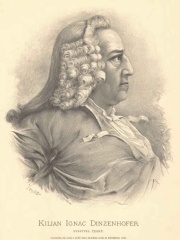
5. Kilian Ignaz Dientzenhofer (1689 - 1751)
With an HPI of 60.97, Kilian Ignaz Dientzenhofer is the 5th most famous Czech Architect. His biography has been translated into 22 different languages.
Kilian Ignaz Dientzenhofer (Czech: Kilián Ignác Dientzenhofer; 1 September 1689 – 18 December 1751) was a German Bohemian architect of the Baroque era. He is among the most prolific and renowned architects of his era in Bohemia. He was born into the well known Dientzenhofer family of architects and is considered its most talented and productive member.

6. Jan Santini Aichel (1677 - 1723)
With an HPI of 57.86, Jan Santini Aichel is the 6th most famous Czech Architect. His biography has been translated into 20 different languages.
Jan Blažej Santini Aichel (Italian: Giovanni Battista Santini Aichel, German: Johann Blasius Santini Aichel; 3 February 1677 – 7 December 1723) was a Czech architect of Italian descent. His major works are representative of the unique Baroque Gothic style.

7. Adolf Lang (1848 - 1913)
With an HPI of 56.86, Adolf Lang is the 7th most famous Czech Architect. His biography has been translated into 16 different languages.
Adolf Láng (born Adolf Lang; 15 June 1848 – 2 May 1913), was a Hungarian architect.

8. Josef Gočár (1880 - 1945)
With an HPI of 55.78, Josef Gočár is the 8th most famous Czech Architect. His biography has been translated into 16 different languages.
Josef Gočár (13 March 1880 in Semín – 10 September 1945 in Jičín) was a Czech architect. He was one of the founders of modern architecture in the Czech Republic.

9. Jan Kotěra (1871 - 1923)
With an HPI of 55.23, Jan Kotěra is the 9th most famous Czech Architect. His biography has been translated into 19 different languages.
Jan Kotěra (18 December 1871 – 17 April 1923) was a Czech architect, artist and interior designer. He was one of the key figures of modern architecture in Bohemia.
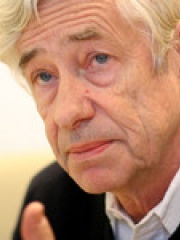
10. Jan Kaplický (1937 - 2009)
With an HPI of 54.29, Jan Kaplický is the 10th most famous Czech Architect. His biography has been translated into 15 different languages.
Jan Kaplický (; Czech: [ˈjan ˈkaplɪtskiː]; 18 April 1937 – 14 January 2009) was a Neofuturistic Czech architect who spent a significant part of his life in the United Kingdom. He was the leading architect behind the innovative design office, Future Systems. He was best known for the neofuturistic Selfridges Building in Birmingham, England, and the Media Centre at Lord's Cricket Ground in London.
People
Pantheon has 10 people classified as Czech architects born between 1677 and 1937. Of these 10, none of them are still alive today. The most famous deceased Czech architects include Adolf Loos, Josef Hoffmann, and Joseph Maria Olbrich.
Deceased Czech Architects
Go to all RankingsAdolf Loos
1870 - 1933
HPI: 74.17
Josef Hoffmann
1870 - 1956
HPI: 69.90
Joseph Maria Olbrich
1867 - 1908
HPI: 67.69
Balthasar Neumann
1687 - 1753
HPI: 66.05
Kilian Ignaz Dientzenhofer
1689 - 1751
HPI: 60.97
Jan Santini Aichel
1677 - 1723
HPI: 57.86
Adolf Lang
1848 - 1913
HPI: 56.86
Josef Gočár
1880 - 1945
HPI: 55.78
Jan Kotěra
1871 - 1923
HPI: 55.23
Jan Kaplický
1937 - 2009
HPI: 54.29
Overlapping Lives
Which Architects were alive at the same time? This visualization shows the lifespans of the 7 most globally memorable Architects since 1700.

